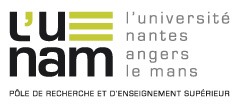Durability indicators of slag-based concrete reinforced by steel fibers: experimental study and multiscale modeling
Résumé
This study is part of a project investigating the possible use of slag-based concretes reinforced by steel fibers for various structures of critical interest, exposed to marine environments and aimed at improving the characteristics of the structure compared to the classical solution of concretes reinforced by steel rebars. It is noteworthy that, with one exception, slag-based steel fiber-reinforced concretes have not yet been studied. Four concrete mix designs were investigated featuring various fiber contents: 0 kg.m-3 (i.e., without fiber), 20 kg.m-3, 40 kg.m-3 and 60 kg.m-3. Mechanical properties and durability indicators were tested, with a focus on chloride diffusivity (Rapid chloride Migration tests) and electrical resistivity (Wenner tests). Migration tests showed that chloride diffusivity increases moderately between 0 kg.m-3 and 40 kg.m-3 fiber content (25%) and more strongly between 40 kg.m-3 and 60 kg.m-3 fiber content (21%). With regard to mechanical properties, the best compromise for fiber content is 40 kg.m-3. Thanks to a multiscale homogenization model coupled with a hydration model, the effect of steel fibers on the durability indicators is determined. It successfully reproduces the increases in resistivities as a function of time and their decreases as a function of fiber content. The moderate linear increase in chloride diffusivity with fiber content (≤ 40 kg.m-3) is also well reproduced by accounting for an interphase of 22 µm width around the fibers. Thus, experimental and numerical points of views are quite complementary, making it possible to identify the mechanisms involved in the case of the concretes studied here.
Domaines
Génie civil| Origine | Fichiers produits par l'(les) auteur(s) |
|---|---|
| licence |



